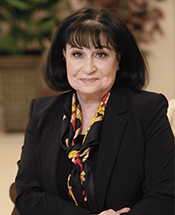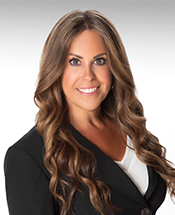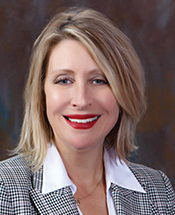 With the so-called silver tsunami of aging baby boomers well on its way, long term care operators have no choice but to adapt to this new generation of customers—if they haven’t already.
With the so-called silver tsunami of aging baby boomers well on its way, long term care operators have no choice but to adapt to this new generation of customers—if they haven’t already.
One of the most important paradigm shifts is in the mindset of the new consumer base. Unlike previous generations, baby boomers don’t plan to slow down as they retire; they plan to continue living active, independent lives.
“They have a growth mindset and are looking for engagement and independence,” explained Rita Mabli, president and CEO at United Hebrew of New Rochelle. “They want to maintain their lifestyle, not give it up. They value living with purpose, lifelong learning, and staying connected to their communities through giving back and maintaining creative pursuits.”
 This means operators have to change their mindset, as well, down to the very words they’ve used for decades. As Moti Gamburd, CEO of CARE Homecare, pointed out, many boomers are “allergic to terms like ‘elderly’ or ‘retirement care.’” From their perspective, they’re not retiring but entering a transitional period.
This means operators have to change their mindset, as well, down to the very words they’ve used for decades. As Moti Gamburd, CEO of CARE Homecare, pointed out, many boomers are “allergic to terms like ‘elderly’ or ‘retirement care.’” From their perspective, they’re not retiring but entering a transitional period.
“Many of our clients are still running businesses, going to music festivals, or raising grandchildren,” Gamburd explained. “The senior care format—like communal meals at set times, home activities, and transportation system—can feel infantilizing. If you don’t acknowledge that in your services and your messaging, you lose them.”
A 2023 American Seniors Housing Association (ASHA) report illustrated the growing aversion to that conventional format. Almost 100 percent of respondents indicated a desire to remain independent and self-sufficient, according to Senior Housing News, with roughly a third reporting that they don’t want or need help with activities of daily living. As Trilogy Health Services administrator Anthony Wilson wrote for the National Investment Center for Seniors Housing & Care (NIC) last year, the days of the one-size-fits-all approach to senior living are behind us.
“Instead, senior living operators need to embrace a more personalized approach, offering a variety of housing options ranging from independent living apartments to assisted living suites and memory care units,” Wilson wrote. “This allows residents to choose the level of support and assistance that best suits their individual needs, empowering them to maintain their independence while receiving the care they require.”
At the same time, more than 50 percent of respondents in the ASHA report said they’d prefer to receive care where they already are. This is the other side of the trend toward individualization.
“Many baby boomers are quietly, and increasingly, exploring in-home care options that give them the same benefits without giving up their home, their routines, or their independence,” explained home care entrepreneur and consultant Aaron Marcum. To win those older adults over, operators need to radically redefine their product.
“Baby boomers want autonomy, flexibility, and a lifestyle that aligns with who they are today, not a version of aging that feels institutional or outdated,” Marcum added. “Senior living communities that offer vibrant, resort-style amenities are going to be the winners in the future.”
“Resort-style” aptly describes Choreograph Gainesville, a new active living offering from Discovery Senior Living, which conducted extensive research into the boomer demographic as it developed the community.
“We know they seek to live independently for longer periods, so attracting them to senior living earlier could be challenging,” said Diana Ferrante Thies, Discovery’s executive vice president of brand management and corporate communications. “They’ve spent the last chapter of their life putting others’ purpose first—children, career, aging parents. Now they have the opportunity to shed responsibilities, to experiment, innovate…a sense of freedom to discover new things and invest in themselves.”
Focusing on Lifestyle over Care
Operators nationwide have already risen to the challenges posed by the aging population, increasing their emphasis on independent living options and other services tailored to active lifestyles. A recent report in The Daily Record, which covers business, legal, and legislative news in Maryland, offered a glimpse of the amenities available in communities across the Eastern Seaboard: arts centers, fitness centers with classes and personal training, pickleball courts, walking paths, libraries, and lecture series. A 2023 report in Multi-Housing News, meanwhile, described communities with on-site movie theaters, sports facilities, community gardens, bars, and salons.
 The unifying thread isn’t necessarily luxury; it’s community in the sense boomers are most accustomed to—what Mabli, of United Hebrew of New Rochelle, describes as a marriage of “engagement and independence” that allows residents to lead their own lives while still feeling connected to others. “They want the freedom to age in place with the added benefit of access to health care services, social connections, and opportunities to stay active and engaged,” she said. “They’re looking for places that are modern and flexible—places that allow them to live fully among friends, not just safe and securely.”
The unifying thread isn’t necessarily luxury; it’s community in the sense boomers are most accustomed to—what Mabli, of United Hebrew of New Rochelle, describes as a marriage of “engagement and independence” that allows residents to lead their own lives while still feeling connected to others. “They want the freedom to age in place with the added benefit of access to health care services, social connections, and opportunities to stay active and engaged,” she said. “They’re looking for places that are modern and flexible—places that allow them to live fully among friends, not just safe and securely.”
No detail is too small. When New Jersey-based operator FellowshipLIFE set out to renovate the cultural arts center at its Applewood Village community, its leaders noticed something a little off about the auditorium space.
“When we looked at the room, everything looked great except for the fact that the flooring was wall-to-wall floral pattern, kind of ballroom-looking,” said Liz Fandel, FellowshipLIFE’s chief marketing and innovation officer. “It felt like an older hotel space. So we're going to put an engineered hardwood surface in and have areas around the perimeter with softer carpeting tiles.” Her comments reflect the broader shift away from traditional, stodgy notions of senior living toward more of a lifestyle product.
“For those considering senior living communities, the demand is for more than just a place to stay,” said Nicole Brackett, director of quality and care delivery at Homewatch CareGivers. “Boomers want customized care, fitness options, strong social connections, and access to high-quality health care partnerships.”
One other amenity they want: good food. “When it comes to dining, baby boomers expect a culinary experience, not just a meal,” wrote Jaime Pacheco, general manager at The Cardinal at North Hills, in McKnights last year. “From tableside service to farm-to-table ingredients to tasting menus with wine pairings, food has become cultural capital within communities, providing residents with a sense of belonging through food and social connection.”
Fandel phrased it a little more simply: “Who says that eating well has to be unenjoyable?”
How to Market to Baby Boomers
Of course, operators can’t adjust their models and expect the flood of baby boomers to immediately come calling. To meet the challenges—and reap the opportunities—of the aging population, they also have to rethink their marketing and branding strategies.
The change in messaging follows naturally from the change in mindset. To meet boomers where they are, marketers need to let go of the old ways of thinking about their product.
“Senior living providers need to shift from a care-first narrative to a wellness-and-lifestyle-driven model,” argued Mabli. “To resonate with boomers, marketing and messaging must reflect vitality and purpose, not just care. Operators who embrace innovation, cultivate community, and make clear what sets them apart will be best positioned to meet the expectations of this powerful generation.”
At United Hebrew, she explained, that means framing the campus as “a model of integrative senior living—one that is inclusive, future-focused, and empowering at every stage of aging.” In addition to modernizing its messaging, the operator has invested in community partnerships and technology while focusing on branding that showcases its inclusive, empowering environment. A video on its website prominently features residents engaged in activities such as painting, cooking, and attending a concert.
Digital marketing is key, especially for a generation that rarely owns a landline anymore. “Full digital-marketing channels, social media platforms, using influencers, and developing group forums online need to be an essential part of any marketing program,” said Discovery’s Ferrante Thies. “Connecting with them directly, knowing their likes and dislikes by developing much more edgy and creative advertising campaigns than ever before for seniors—focused on social lifestyles and choices and personalized programs that are true differentiators for your communities—will be attractive to them.”
Ron R. Browning, CEO of digital-marketing agency Intellibright who’s worked with senior living professionals, remarked, “Operators need to think like consumer brands. Start with a strong digital foundation: your website should be mobile-optimized, fast, and lead-generating. Offer virtual tours, transparent pricing, and tools to schedule visits without a phone call.”
 Fandel, at FellowshipLIFE, stressed the need to steer clear of branding that positions the operator as a care provider. Too many senior living community websites are adorned with photos of residents being supported by caregivers, she argued; too few highlight the active lifestyles residents continue to lead. One of FellowshipLIFE’s current direct mail campaigns features a woman with short, blonde hair wearing orange sunglasses and a leather jacket. “Who says getting older is boring?” the mailing asks. “Join us to learn what life is really like at Fellowship Village.”
Fandel, at FellowshipLIFE, stressed the need to steer clear of branding that positions the operator as a care provider. Too many senior living community websites are adorned with photos of residents being supported by caregivers, she argued; too few highlight the active lifestyles residents continue to lead. One of FellowshipLIFE’s current direct mail campaigns features a woman with short, blonde hair wearing orange sunglasses and a leather jacket. “Who says getting older is boring?” the mailing asks. “Join us to learn what life is really like at Fellowship Village.”
At CARE Homecare, Gamburd’s team takes an approach that senior living communities may benefit from, as well—what he describes as serving residents’ lifestyle, not their age. “We made lighter terms that are easier to absorb, from how we describe our services to how we train our care managers,” he said. “We removed care plans and discussed their routines. To sandwich our approach, we asked about travel plans before medical history.
“We had a client in his late seventies who insisted we help him maintain his weekend motorcycle rides,” he added, “so a caregiver rides with him in a separate car in case anything happens.”
His comments echo Fandel’s descriptions of FellowshipLIFE’s prospective residents, who often aren’t even focused on a community’s care offerings. “They’re 100 percent focused on independent living; even when they tour assisted living or skilled nursing, they don’t want to look at it,” she said. “They’re like, ‘Yeah, but I want to see the apartments.’”
Crucially, that’s not to suggest operators should sideline the care aspect entirely. Rather, the idea is to engage with the potential resident’s plan to continue living life as they’ve lived it while giving them security in the knowledge that options from a trusted provider will be there later.
“It’s independent living; you truly are living independently,” said Fandel, “and if there's a need for a higher level of care later in your life, it will be here.”
Steve Manning is a journalist based in New York City.